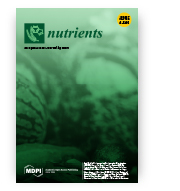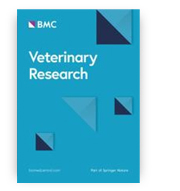Kinetics of Biotic and Abiotic CO Production during the Initial Phase of Biowaste Composting
Sylwia Stegenta-Dąbrowska, Karolina Sobieraj, Jacek A. Kozieł, Jerzy Bieniek, Andrzej Białowiec
Energies
 Knowledge of kinetic parameters of CO production during biowaste composting is significantly important for the prediction of its course and estimation of total gas quantity. This allows increasing the control of the process, to minimize its negative impact on the environment and to protect the occupational safety of employees exposed to CO in the biowaste composting plant. For the first time, a full study of the influence of temperature and biowaste sterilization on the kinetics of CO production is presented. The lab-scale experiments used a mixture of green waste, dairy cattle manure, and sawdust in two variants: sterilized and non-sterilized samples. The process was carried out in controlled temperature reactors with measuring the concentrations of CO, O2, and CO2 every 12 h.CO production and k value increased with temperature. However, higher CO production was observed in biotic conditions between 10~50 °C, suggesting the biotic CO formation and 1st-order kinetics. The abiotic (thermochemical) process was more efficiently generating CO above 50 °C, described with a 0-order kinetic model. Additionally, the rate constant (k) value of CO production under biotic conditions was increasing up to a temperature of 60 °C, above which a slight decrease in CO production rate was observed at 70 °C. The presented results are the basis for further studies focused on the feasibility of (1) the mitigation and (2) valorization of CO production during the biowaste biostabilization are warranted.
Knowledge of kinetic parameters of CO production during biowaste composting is significantly important for the prediction of its course and estimation of total gas quantity. This allows increasing the control of the process, to minimize its negative impact on the environment and to protect the occupational safety of employees exposed to CO in the biowaste composting plant. For the first time, a full study of the influence of temperature and biowaste sterilization on the kinetics of CO production is presented. The lab-scale experiments used a mixture of green waste, dairy cattle manure, and sawdust in two variants: sterilized and non-sterilized samples. The process was carried out in controlled temperature reactors with measuring the concentrations of CO, O2, and CO2 every 12 h.CO production and k value increased with temperature. However, higher CO production was observed in biotic conditions between 10~50 °C, suggesting the biotic CO formation and 1st-order kinetics. The abiotic (thermochemical) process was more efficiently generating CO above 50 °C, described with a 0-order kinetic model. Additionally, the rate constant (k) value of CO production under biotic conditions was increasing up to a temperature of 60 °C, above which a slight decrease in CO production rate was observed at 70 °C. The presented results are the basis for further studies focused on the feasibility of (1) the mitigation and (2) valorization of CO production during the biowaste biostabilization are warranted.
10.3390/en13205451
Elderly Perception of Distance to the Grocery Store as a Reason for Feeling Food Insecurity — Can Food Policy Limit This?
Robert Gajda, Marzena Jeżewska-Żychowicz
Nutrients
 The sense of food insecurity in a group of elderly people may be determined by the perception of distance to food outlets. The aim of the study was to assess the relationship between the perception of food insecurity by the elderly and their perception of the distance between the places of residence and food purchase. A cross-sectional quantitative survey was carried out in 2019–2020 amongst 762 Polish elderly living in Świętokrzyskie and Śląskie Voivodeship. The assessment of the relationships between the perceived food insecurity due to living too far away from the grocery shops and socio-demographic features was performed using multiple correspondence analysis (MCA), chi-square tests, and Phi and Cramér’s V coefficients. Too great a distance to the place of food purchase was the cause of a lack of a sense of food security in 20.5% of the study sample, especially in men, people aged 75 and more, people living in a rural environment and people living alone. People reporting a lack of food due to the distance to the place of purchase showed socio-demographic characteristics similar to those of people declaring a lack of a sense of food security. Reduced food consumption due to the distance from the place of sale, including of fish (24.8%), some fruits (18.9%) and vegetables (15.4%) and beef (17.3%), may contribute to the deterioration of the diet and, as a result, health conditions. Including access to places of the sale of food in food policy as a factor contributing to ensuring the food security of older people can help to maintain a better quality of life and avoid exclusion. Especially in a situation of limited independence, food insecurity in elders due to causes other than financial limitations should be a focus of food policy.
The sense of food insecurity in a group of elderly people may be determined by the perception of distance to food outlets. The aim of the study was to assess the relationship between the perception of food insecurity by the elderly and their perception of the distance between the places of residence and food purchase. A cross-sectional quantitative survey was carried out in 2019–2020 amongst 762 Polish elderly living in Świętokrzyskie and Śląskie Voivodeship. The assessment of the relationships between the perceived food insecurity due to living too far away from the grocery shops and socio-demographic features was performed using multiple correspondence analysis (MCA), chi-square tests, and Phi and Cramér’s V coefficients. Too great a distance to the place of food purchase was the cause of a lack of a sense of food security in 20.5% of the study sample, especially in men, people aged 75 and more, people living in a rural environment and people living alone. People reporting a lack of food due to the distance to the place of purchase showed socio-demographic characteristics similar to those of people declaring a lack of a sense of food security. Reduced food consumption due to the distance from the place of sale, including of fish (24.8%), some fruits (18.9%) and vegetables (15.4%) and beef (17.3%), may contribute to the deterioration of the diet and, as a result, health conditions. Including access to places of the sale of food in food policy as a factor contributing to ensuring the food security of older people can help to maintain a better quality of life and avoid exclusion. Especially in a situation of limited independence, food insecurity in elders due to causes other than financial limitations should be a focus of food policy.
10.3390/nu12103191
Serum symmetric dimethylarginine concentration in healthy horses and horses with acute kidney injury
Natalia Siwińska, Agnieszka Żak, Malwina Słowikowska, Artur Niedźwiedź, Urszula Pasławska
BMC Veterinary Research
 Background: There are limited options to diagnose acute kidney injury (AKI) in horses. Symmetric dimethylarginine (SDMA) is routinely used in human and small animal medicine. The aim of this study was to assess serum SDMA concentrations in healthy horses and horses with AKI. The objective of this study was to evaluate the association of: 1) age, 2) sex, 3) body weight and 4) serum creatinine and urea levels on serum SDMA concentrations. Fifty-three healthy horses, including 17 foals (2–6 months of age) and 36 adult horses (3–29 years of age), and 23 horses with AKI were included in the study based on history, physical examination, blood analysis, urinalysis and an ultrasonographic examination of the urinary tract. Serum SDMA concentrations were measured using a non-species specific commercial ELISA test.
Background: There are limited options to diagnose acute kidney injury (AKI) in horses. Symmetric dimethylarginine (SDMA) is routinely used in human and small animal medicine. The aim of this study was to assess serum SDMA concentrations in healthy horses and horses with AKI. The objective of this study was to evaluate the association of: 1) age, 2) sex, 3) body weight and 4) serum creatinine and urea levels on serum SDMA concentrations. Fifty-three healthy horses, including 17 foals (2–6 months of age) and 36 adult horses (3–29 years of age), and 23 horses with AKI were included in the study based on history, physical examination, blood analysis, urinalysis and an ultrasonographic examination of the urinary tract. Serum SDMA concentrations were measured using a non-species specific commercial ELISA test.
Results: In healthy adult horses, the value of SDMA was 0.53 ± 0.14 μmol/L. The value was higher in foals (1.5 ± 0.4 μmol/L,P < 0.001). Horses with AKI had significantly higher concentrations of SDMA compared to healthy horses (1.76 ± 1.05 μmol/L,P < 0.001). In the healthy adult horses, there was no association of sex, age or body weight on SDMA. However, a significant positive relationship was found between serum creatinine and SDMA concentrations.
Conclusions: Healthy adult horses had SDMA values similar to those of other species. Foals had higher SDMA values. Therefore, different reference values should be created for them. The study confirmed an increased SDMA in horses with AKI. This, as well as the low influence of extrarenal factors on the SDMA values, may confirm its usefulness in the diagnosis of kidney dysfunction. Higher SDMA values may also indicate a more advanced degree of kidney dysfunction. Further research is required to determine whether SDMA could be used to detect kidney dysfunction in the asymptomatic stage of AKI.
10.1186/s12917-020-02621-y









